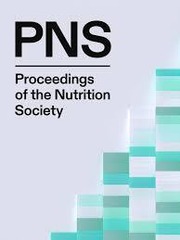No CrossRef data available.
Article contents
Budgetary tracking of food and nutrition security funding in selected Sahel and West Africa regions from 2017 to 2019
Published online by Cambridge University Press: 19 November 2024
Abstract
The longer-term trend towards decreasing foreign assistance has aroused great interest in tracking domestic funding given that more than half of the anticipated additional funding for nutrition is expected from domestic sources. Given the limited trend analysis of nutrition budgets across developing countries, this review aimed to examine trends in nutrition financing as a proxy of national commitment to nutrition. We explored the programme-based budget allocations and expenditure from 2017 to 2019 in the Chad Republic, Gambia and Ghana for food and nutrition security (FNS) activities in various sectors. The total annual allocations for FNS activities from 2017 to 2019 in the Chad Republic, Gambia and Ghana were €24,796,501, €155,416,112 and €3,299,472,194 of which 93.5%, 15.7% and 100% respectively of allocated funded were expended. The proportion of FNS allocations and expenditure was <5% of the gross domestic product across the three countries. Three-quarters (the Chad Republic and Gambia) and one-quarter (Ghana) of all FNS activities were nutrition-friendly as compared to being nutrition-specific/sensitive. Of the nutrition-specific/sensitive activities, about 9 in 10 were nutrition-sensitive. The main thematic areas of FNS activities were agriculture/food systems, health, education, water, sanitation and hygiene. There were significant resource gaps in FNS budget allocations and expenditure across the three countries making it difficult to establish a consistent domestic funding trend. Resource mobilisation plans to bridge budget implementation gaps for domestic funding are urgently needed to scale-up government commitments toward the attainment of the sustainable development goals in these countries.
Keywords
- Type
- Conference on Multisectoral approach to strengthening food systems and achieving sustainable nutrition targets in Africa
- Information
- Copyright
- © The Author(s), 2024. Published by Cambridge University Press on behalf of The Nutrition Society



